Congratulations to our All-State Orchestra winners!
We want to give a special shoutout to two violin students of Angel Valchinov: Nick Brady, who achieved a spot on the All-State Orchestra, and Abby Kirincich, who earned a spot at the MMEA Eastern District Junior Festival.
Congratulations to them both!
The CCM Concert & Lecture Series Continues
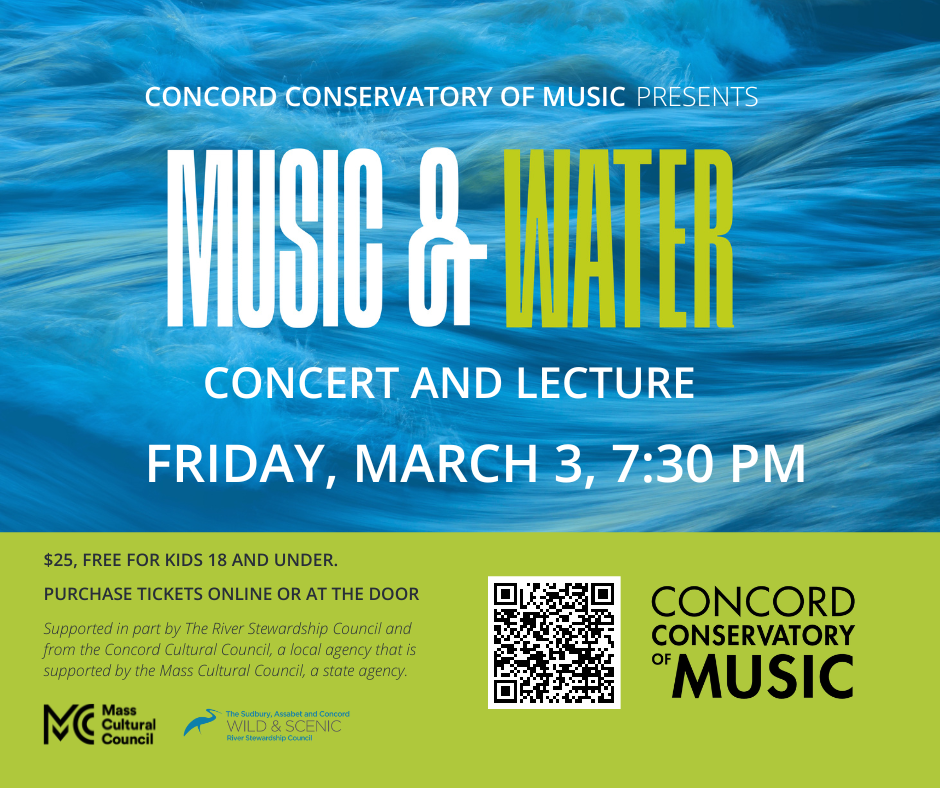
Join us on Friday, March 3rd at 7:30 pm when CCM partners with OARS and The Sudbury, Assabet and Concord Wild & Scenic River Stewardship Council to present Music & Water.
Our guest speaker Alison Field-Juma, Executive Director of OARS, will act as a guide and help us explore our local rivers. Enjoy a chamber music concert inspired by water and performed by CCM faculty including Nicole Parks, Susan Gottschalk, Stephen Marotto, Yoko Hagino, and Justin Meyer. Both the Concord Cultural Council and River Stewardship Council provided funding support for the concert.
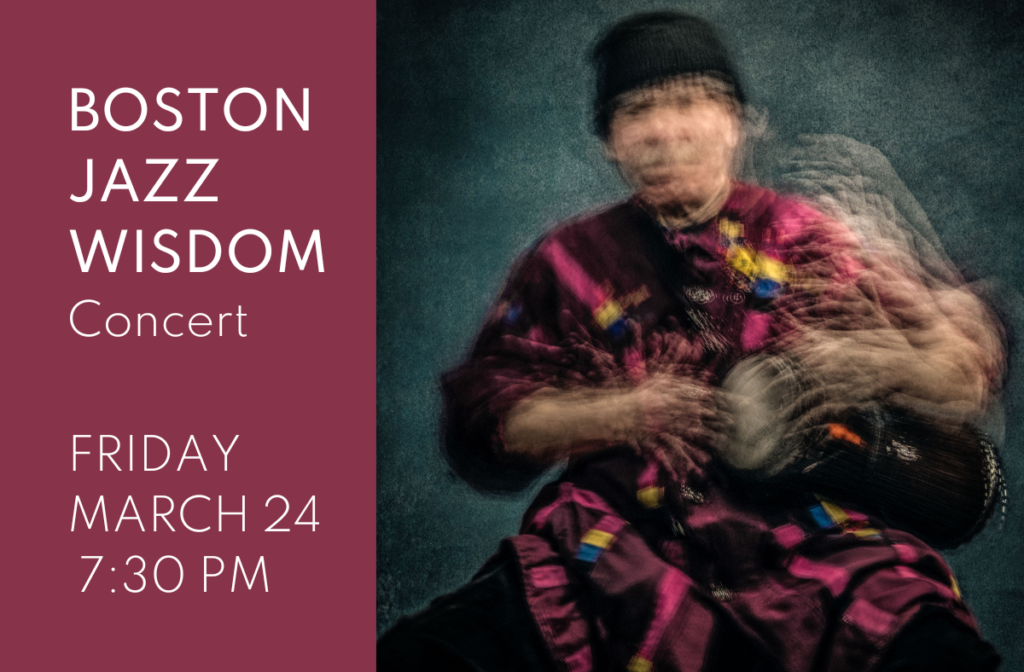
Join us when jazz percussion legend Ra-Kalam Bob Moses leads this all-star jazz concert with Dave Bryant on piano, John Lockwood on bass, and Concord Conservatory’s Tsuyoshi Honjo on saxophone for an evening of lively, free-spirited jazz.
Purchase Tickets in advance or payable at the door for this event. ($25 General Admission and free for students 18 and under)
 The Concord Cultural Council, a local agency supported by the state agency Mass Cultural Council, generously granted funding toward the 2022-2023 CCM Concert & Lecture Series.
The Concord Cultural Council, a local agency supported by the state agency Mass Cultural Council, generously granted funding toward the 2022-2023 CCM Concert & Lecture Series.
The CCM Listening Project Playlist
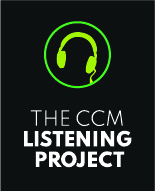 Since water has long been a source of artistic and philosophical inspiration for mankind, Stephen Marotto presents his February Listening Project Playlist inspired by water.
Since water has long been a source of artistic and philosophical inspiration for mankind, Stephen Marotto presents his February Listening Project Playlist inspired by water.
Water is a symbol of tranquility and serenity, and also represents our tenuous relationship with our natural environment and ecosystem. Explore a small sample of ways that water has encouraged and enthused composers throughout the centuries.
Remember to use your Listening Journal for additional thought-provoking questions to think about while listening to the selections. It’s a great way to start insightful conversations with your family, friends, or music instructor!
Are you a CCM friend yet?
Join us on Instagram and Facebook to be the first to learn CCM news and more! See what music videos we like, photos we post, practice tips and articles we suggest, and new music in the music world. Be sure to bookmark the CCM Blog to never miss a new post.
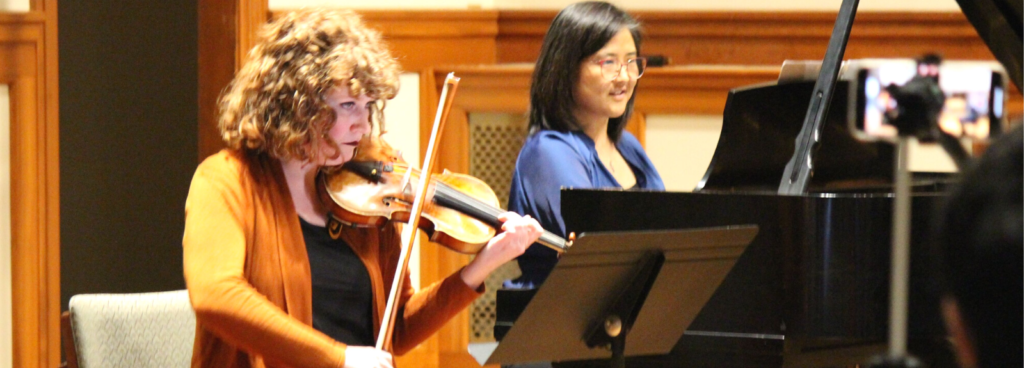
For Nicole Parks, the violin has been an instrument of discovery right from the start. Her first revelation about the violin, in fact, was that she liked playing it. “I honestly didn’t want to play the violin,” Nicole says. “I ended up there sort of by accident.”
As an 11-year-old public school student, Nicole decided to take viola lessons. She got in the wrong line, however, and signed up for violin by mistake.
It was a fateful decision. The violin is a great starting point for young musicians, for several reasons. First, students as young as four are able to play a violin when other instruments would be literally beyond their reach. But even for older beginners like Nicole, the violin is an excellent choice because “there’s so much more pedagogical material for young students on the violin than there is for a lot of other instruments,” Nicole says.
Creating Music from Scratch
That wealth of material can help students quickly progress from grudging involvement to enthusiastic engagement to deep devotion. As a CCM violin instructor, Nicole guides her students through that journey. She not only introduces kids to contemporary violin music, but also helps them discover how to create their own. “One thing I like to do when exploring the violin is to play around with extended techniques,” says Nicole, who recently taught a class on extended techniques at CCM’s Creativity Festival.
“It involves techniques that aren’t typical, and aren’t really even acceptable within the classical music tradition—playing around with scratchy sounds and scrapes that most students and teachers think of as ‘bad’ sounds,” Nicole says. “The challenge is to make those ‘bad’ sounds beautiful and incorporate them into your performance.”
A Large Sphere of Influence
There’s a world of difference between the violin’s reputation as the rote sound of long-gone European composers and its actual place in the landscape of vibrant, contemporary global music. There is, for example, a long history of classical violin music in India. “It surprised me, honestly,” Nicole says. “It’s stunning — absolutely beautiful music with a completely different technique. It uses scales and modes that we don’t use in Western classical music. It sounds different, but it’s still clearly the same instrument, which is really cool.”
China has a tradition of erhu music, sometimes called the two-stringed violin.
“It’s a very different instrument but it’s used in a way that’s similar to the violin,” Nicole says. “It’s prominent melodically in the Chinese version of classical music.”
Individual performers from around the world are also expanding and redefining violin 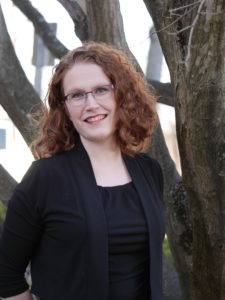 music. One of Nicole’s favorites is Japanese violinist and composer Mari Kimura. “She plays with subtones and is able to get notes out of a violin that are lower than the lowest open string,” Nicole says. “I’m sure it doesn’t actually defy physics, but it seems like it does. It’s so thrilling to hear what she’s doing — it’s such an interesting sound.”
music. One of Nicole’s favorites is Japanese violinist and composer Mari Kimura. “She plays with subtones and is able to get notes out of a violin that are lower than the lowest open string,” Nicole says. “I’m sure it doesn’t actually defy physics, but it seems like it does. It’s so thrilling to hear what she’s doing — it’s such an interesting sound.”
Modern Innovation with a Classical Foundation
The greatest challenge when instructing newer violin students is to instill the basic techniques every violinist requires while also sparking enough creative inspiration to keep them interested. Nicole has found that it’s not an either/or proposition. “The way that I approach teaching is very much through self-exploration,” she says. “One of the most important aspects of learning an instrument, especially early on, is repetitions. And one of the challenges is to get kids invested in that. I try to do it right from the start by having the students create their own pieces to give them those repetitions.”
The open-string pizzicato songs that young students use for their reps are actually conducive to self-exploration. “Those songs use two open strings, and the kids repeat them five times at home,” Nicole says. “Kids will get bored with that pretty quickly, so I let them choose which string goes where. So they end up writing their own version of that repetition exercise, and that‘s what they practice.”
Giving students autonomy so early in their learning journey helps them clear an important hurdle. “Initially, a lot of kids just want to be told what to do,” Nicole says. “But eventually, when they realize they have some creative control over the process, they tend to grab onto it and go. As they advance, they start to do little things like create their own way of playing a scale, or bring in their own rhythms each time. That’s why it’s so important to get them invested from the start.”
The Teacher Keeps Learning, Too

From that reluctant 11-year-old beginner, Nicole has become so invested in contemporary violin that she has created her own ensemble, the Semiosis Quartet.
She chose the name after reading a biography of NPR host Ira Glass, a semiotics proponent. ”It’s basically the study of symbols and their relation to language and communication,” Nicole says. “And I just immediately thought that would make a great name for a contemporary music quartet because it just fits so well with what we do. As contemporary players, we don’t just read notes and rhythms as in standard classical music. We’re also reading little notes and graphics that describe the sound the composer wants to get since there isn’t a standard notion for these things anymore. So it’s all about translating these visuals into a musical language that the audience can understand and gain something from.”
Nicole uses the Semiosis Quartet as a vehicle to bring attention to some of the most creative composers of the late 20th century and into the 21st. By continuing to set new goals and challenges for herself, she practices what she teaches—and students tend to respond to that. “Seeing them make progress in their own ways and feel proud of themselves when they do is so rewarding,” Nicole says. “It’s one thing for me to see their progress, but when they see the progress and are excited by it, that’s really cool. And seeing them do that with something that I am so passionate about is really a wonderful feeling.”
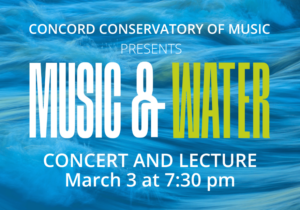 You can see Nicole perform works inspired by water with the CCM faculty chamber group as part of the Music & Water concert and lecture on March 3, at 7:30 pm.
You can see Nicole perform works inspired by water with the CCM faculty chamber group as part of the Music & Water concert and lecture on March 3, at 7:30 pm.
The Semiosis Quartet will perform works by Stefanie Lubkowski (“This is the light of autumn…”), John Zorn (“Cat O’ Nine Tails”), Jessie Montgomery (“Strum”), and
Gabriela Ortiz (“La Calaca”) at 7:30 p.m. on Saturday, March 4 at United Parish in Brookline (15 Marion St.) and 1:00 p.m. Sunday, March 5 at the New School of Music (25 Lowell St., Cambridge). Suggested donation is $10-15 at the door.

We recently took a deep dive into our musical creativity—an important fundamental skill that helps musicians make music their own. Creativity inspires musicians to branch out to use their knowledge and feelings to find new ways to play a composer’s song or even write music of their own.
CCM students and parents flexed their creative muscles at our January’s Creativity Festival. What was our goal for this festival? To inspire everyone to challenge themselves to be more creative musicians or songwriters or to be more creative in their daily lives. Our students and their families walked away feeling uplifted and knowing more about themselves as creators.
The Creativity Festival presented engaging, age-appropriate workshops for our youth and  adult students. From Environmental Storytelling using the book The Mitten, and Ocean Adventure: Ensemble Improvisation through Music & Movement, to Drum Improvisation as well as Folk Music Theory: The Nashville Number System—there was something for everyone and every interest. There was musical storytelling, improvisation, music & movement, and more. Designed to develop the confidence to take risks, experiment, and problem-solve in a supportive musical environment, the workshops were free for CCM students.
adult students. From Environmental Storytelling using the book The Mitten, and Ocean Adventure: Ensemble Improvisation through Music & Movement, to Drum Improvisation as well as Folk Music Theory: The Nashville Number System—there was something for everyone and every interest. There was musical storytelling, improvisation, music & movement, and more. Designed to develop the confidence to take risks, experiment, and problem-solve in a supportive musical environment, the workshops were free for CCM students.
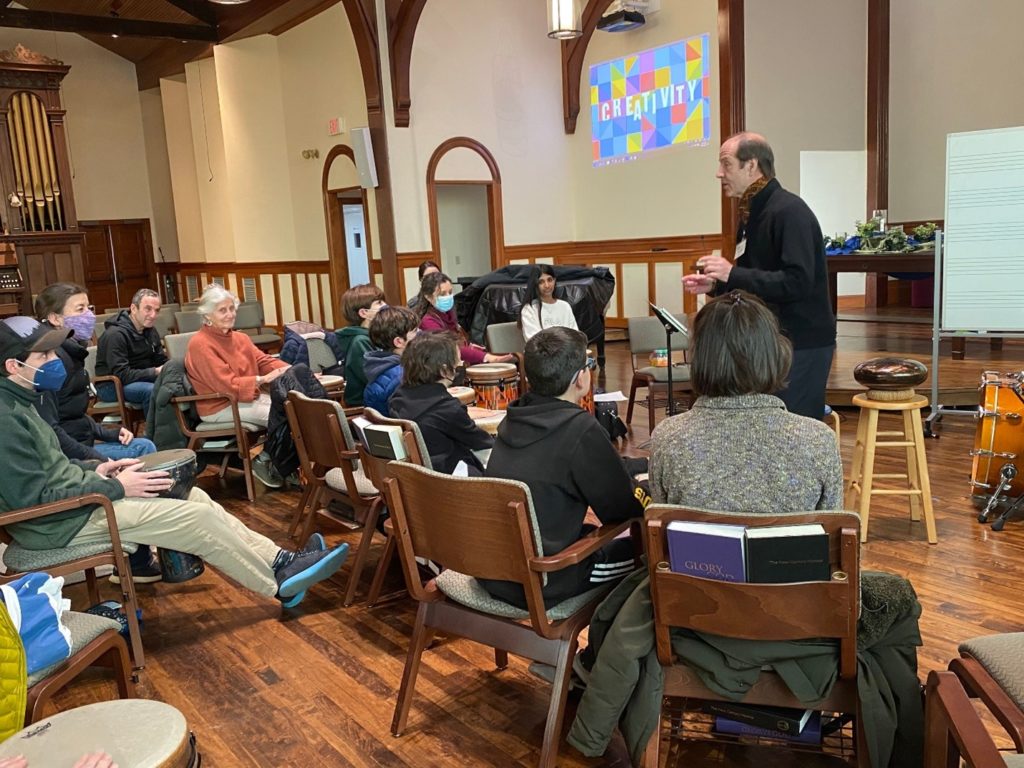 We welcomed guest speaker Jon Hazilla, a percussion professor at Berklee College of Music, musician, and author. His insights on creativity engaged and inspired attendees to activate their imaginations and to put their individual creativity into practice.
We welcomed guest speaker Jon Hazilla, a percussion professor at Berklee College of Music, musician, and author. His insights on creativity engaged and inspired attendees to activate their imaginations and to put their individual creativity into practice.
All student and parent participants learned how to transpose, how to consider music from the composer’s perspective, and how to make sense of intervals and rhythms. With enthusiasm, Jon Hazilla reminded all about the importance of positivity, and of course, creativity!